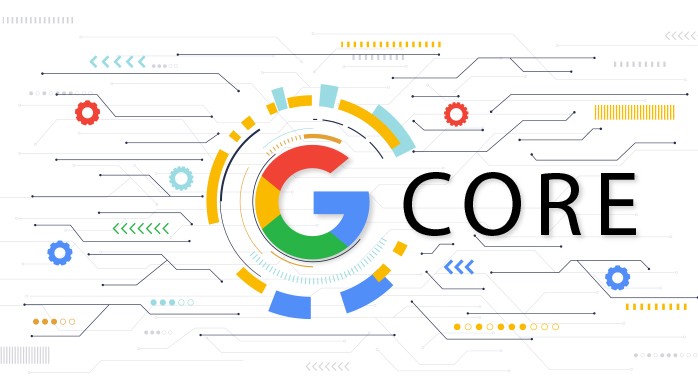In the world of SEO and web performance, staying updated is key to staying ahead. Google’s recent update to PageSpeed Insights (PSI) brings an exciting addition: the Data Collection Period. For more details, check out this article on Google’s Data Collection Period in PSI. You might also find valuable insights in Webzoar’s guide to Google’s CrUX Vis Core Web Vitals Tool. If you’ve ever wondered how Google collects performance data for your site and how it impacts your Core Web Vitals score, this update is here to provide clarity. Let’s explore what this means for website owners, developers, and SEO professionals.
What is PageSpeed Insights?
PageSpeed Insights (PSI) is Google’s go-to tool for measuring website performance. It evaluates your site’s speed and user experience by analyzing Core Web Vitals metrics such as:
- Largest Contentful Paint (LCP): How quickly does the main content of your page load?
- First Input Delay (FID): How responsive is your site to user interactions?
- Cumulative Layout Shift (CLS): Is your site visually stable, or do elements jump around?
But until now, many users were left guessing about the timeframe used to gather this data. Enter the Data Collection Period feature. Read more about its significance in this in-depth coverage and explore Webzoar’s expert breakdown on CrUX Vis and Core Web Vitals.
What is the Data Collection Period in PSI?
A Developer’s Perspective: Barry Pollard, Web Performance Developer Advocate at Google Chrome, announced the change on X (formerly Twitter):
“Unfortunately PageSpeed Insights does not show the data collection period in their UI”
You know what—they’re right! We thought we should fix that. So we did. Available now on PSI. https://t.co/YoMkA41Ae1 pic.twitter.com/tB2gv9PGRg
— Barry Pollard (@tunetheweb) January 13, 2025
This comment was in response to a DebugBear blog post pointing out the lack of clarity in PSI around the time range covered by its metrics. It highlights how feedback from the community drives meaningful updates.
Google’s new Data Collection Period feature provides a clear explanation of the timeframe during which performance data is gathered for your site. By default, PSI uses real-world data from the Chrome User Experience Report (CrUX) to analyze your Core Web Vitals. However, knowing the exact data collection window helps you:
- Understand how recent changes to your website impact performance metrics.
- Pinpoint trends or issues that may align with specific timeframes.
- Gain better insight into how your site performs under varying conditions.
This level of transparency can empower developers and site owners to make more informed decisions.
Ever feel like your website metrics are playing hide-and-seek? This feature is the flashlight you’ve been missing.
Why is This Update Important?
1. Improved Clarity for Webmasters
Previously, the absence of a clear data collection period often left webmasters wondering why their latest optimizations didn’t reflect in their Core Web Vitals scores. With this update, you now have a timestamped reference for the metrics being reported.
2. Enhanced Debugging
If your site’s performance has seen fluctuations, understanding the data collection period allows you to correlate these changes with events like server updates, code deployments, or traffic spikes.
3. Increased Accountability
This feature also ensures greater accountability for agencies and developers by providing a clear timeframe to assess the impact of their efforts on Core Web Vitals.
Debugging without a timeline is like trying to solve a mystery without clues. This feature is your magnifying glass.
How to Use PageSpeed Insights with Data Collection Period
Using PSI to leverage this new feature is straightforward:
- Visit PageSpeed Insights.
- Enter your site’s URL and click “Analyze.”
- Scroll to the “Field Data” section. You’ll now see the Data Collection Period alongside the metrics.
This small yet impactful addition makes it easier to interpret performance reports and act on them effectively.
Ready to play detective? Enter your URL, and let Google spill the beans on your site’s performance!
Other Tools to Check Core Web Vitals
While PSI is an essential tool, don’t forget about other resources:
- Lighthouse: Ideal for in-depth audits.
- CrUX Vis: Provides detailed visualizations of user experience metrics.
Because one tool is never enough when you’re chasing the perfect website.
Final Thoughts
Google’s addition of the Data Collection Period to PageSpeed Insights is a step forward in making website performance metrics more transparent and actionable. By understanding when your data was collected, you can better align your optimization efforts and measure their true impact.
So, the next time you’re tweaking your website’s performance, remember to check this new feature. It might just be the clarity you’ve been looking for.
FAQs
1. Worried about your Core Web Vitals?
Webzoar is your ultimate partner for all things web optimization! From improving Core Web Vitals to delivering comprehensive performance audits, we offer:
- Custom-tailored solutions for speed and stability.
- Expert recommendations for SEO and UX improvements.
- Ongoing support to keep your site running smoothly.
Let Webzoar help you achieve a seamless user experience and higher rankings today!
2. What is the purpose of the Data Collection Period?
The Data Collection Period clarifies the timeframe during which performance metrics were gathered, making it easier to link site changes to reported results.
3. Can I rely on PSI for real-time performance data?
PSI uses field data from CrUX, which is based on real-world user interactions. While it’s not real-time, it’s highly reliable for long-term performance insights.
4. How does the Data Collection Period impact Core Web Vitals optimization?
By knowing the timeframe for data collection, you can ensure your optimizations align with the data being reported, making your efforts more measurable and effective.
Let us know your thoughts in the comments below! Are you excited about this update? Or does it feel like another tech puzzle to solve?




